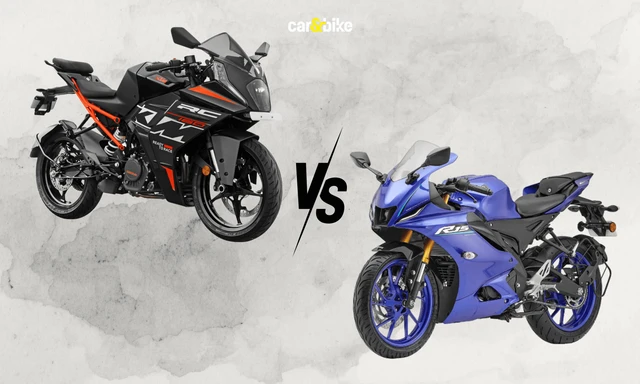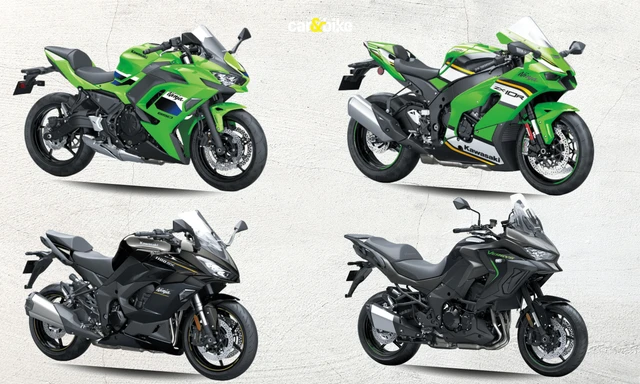Fascinating Story of The Iconic Le Mans

- The biggest margin of victory at the Le Mans was a whopping 350 kms
- The record speed recorded at the Le Mans is around 405 km/h
- Greatest no. of participation in Le Mans races is - Henri Pescarolo.
Le Mans is one of the most iconic automobile events in the world. The 24-hour event that happens every year is a testament of the love, passion, and skill. Finishing the entire Le Mans is an achievement in itself, let alone getting a podium finish. There are so many reasons why the Le Mans is as iconic as it is (probably a lot more fatigue-driven but still fun!).

Photo Credit: unsplash.com
The iconic race – Le Mans
Le Mans is derived from the ancient Gallic tribe of the Cenomani. The entire name of the race is "24 Hours of Le Mans". This is an endurance-focused race that is held in Le Mans, France.
The Le Mans is the oldest existing endurance race in the world. The duration of the race is what sets it apart from races such as F1.

Photo Credit: unsplash.com
The track at Le Mans
The race happens at the Circuit de la Sarthe in France. The entire length of the track is currently 13.626 kilometers (8.466 miles). There are about 38 turns (with several hairpin bends) that test the driver's skill to the maximum.
The several innovations at Le Mans
One of the most iconic things about Le Mans is that it has been home to some of the best innovations in the history of automobiles:
- Road Surfaces (1922): Earlier, the race happened on dirt tracks. In 1922, the road was remanufactured with tar-coating.
- Aerodynamic car bodies (1925): Streamlined bodies became a staple since 1925 thanks to Le Mans
- Fog Lamps (1926): Fog lamps were introduced due to mist problems on the track.
- Front-wheel drive (1927): A shift from the traditional drive, the front-wheel-drive was introduced at the 1927 Le Mans.
- Rear engine (1949): The Renault 4 CV was the first rear-engine car introduced in 1949.
- Direct-injection engine (1952): A new system that increased performance while saving fuel efficiency was introduced at Le Mans.
- Disc brakes (1953): Disc brakes – a system used in aircraft was introduced here to improve brake efficiency.
- Quartz Iodine Headlamps (1962): To combat the night race, which was plunged in darkness, these headlamps were introduced.
- Gas Turbine Engine (1963): The engine didn't meet the race regulations but did make quite some noise at the race.
- Slick Tires (1967): Tires with smooth treads were introduced. They provided better traction.
- Rotary engine (1970): The technology was introduced here but didn't provide positive performances.
- Hybrid engine (1998): Hybrid engines were introduced to the world that used electric motors and traditional combustion engines.
- Racing Diesel (2006): Improvements in diesel injections

Photo Credit: unsplash.com
Rivalries that transcend boundaries
One of the most iconic rivalries in automobile history – Ford vs. Ferrari blossomed at Le Mans. One of the best movies of 2019, "Ford vs. Ferrari," starring Christian Bale and Matt Damon, highlighted this rivalry.
Another iconic rivalry that happened during Le Mans was Jaguar vs. Porsche.
Latest News
 Jafar Rizvi | Jan 9, 2026KTM RC 160 vs Yamaha R15: Specifications, Features, Prices ComparedKTM’s new RC 160 goes head-to-head with the Yamaha R15 in the entry-level sportbike category. Here is how the two fare on paper.1 min read
Jafar Rizvi | Jan 9, 2026KTM RC 160 vs Yamaha R15: Specifications, Features, Prices ComparedKTM’s new RC 160 goes head-to-head with the Yamaha R15 in the entry-level sportbike category. Here is how the two fare on paper.1 min read Amaan Ahmed | Jan 9, 2026Suzuki E-Access Launched At Rs 1.88 Lakh; LFP Battery Promises 95 KM RangeOriginally confirmed for a June 2025 launch, Suzuki's first electric two-wheeler for India has finally arrived almost a year after making its global debut at Auto Expo 2025.3 mins read
Amaan Ahmed | Jan 9, 2026Suzuki E-Access Launched At Rs 1.88 Lakh; LFP Battery Promises 95 KM RangeOriginally confirmed for a June 2025 launch, Suzuki's first electric two-wheeler for India has finally arrived almost a year after making its global debut at Auto Expo 2025.3 mins read car&bike Team | Jan 9, 2026Kawasaki Ninja, Versys Models Offered With Discounts Of Up To Rs 2.50 LakhThe Ninja ZX-10R is offered with maximum benefits, followed by the Ninja 1100SX and Versys 1100.1 min read
car&bike Team | Jan 9, 2026Kawasaki Ninja, Versys Models Offered With Discounts Of Up To Rs 2.50 LakhThe Ninja ZX-10R is offered with maximum benefits, followed by the Ninja 1100SX and Versys 1100.1 min read Bilal Firfiray | Jan 9, 2026Toyota Urban Cruiser EV: What To ExpectToyota will be introducing an all-electric vehicle for the first time in India. It is the Toyota-badged version of the soon-to-be-launched Maruti Suzuki e-Vitara, and here’s everything we expect from it.1 min read
Bilal Firfiray | Jan 9, 2026Toyota Urban Cruiser EV: What To ExpectToyota will be introducing an all-electric vehicle for the first time in India. It is the Toyota-badged version of the soon-to-be-launched Maruti Suzuki e-Vitara, and here’s everything we expect from it.1 min read Jaiveer Mehra | Jan 8, 2026Auto Sales 2025: BMW Group India Sold 18,001 Cars And SUVs, Its Highest Ever Yearly FigureCarmaker delivered 17,271 units under the BMW brand and 730 units under Mini.1 min read
Jaiveer Mehra | Jan 8, 2026Auto Sales 2025: BMW Group India Sold 18,001 Cars And SUVs, Its Highest Ever Yearly FigureCarmaker delivered 17,271 units under the BMW brand and 730 units under Mini.1 min read car&bike Team | Jan 8, 2026Suzuki Motorcycle India Achieves 10 Million Production MilestoneThe 10 millionth unit was an Access 125 scooter, which rolled out from Suzuki’s Gurugram plant.1 min read
car&bike Team | Jan 8, 2026Suzuki Motorcycle India Achieves 10 Million Production MilestoneThe 10 millionth unit was an Access 125 scooter, which rolled out from Suzuki’s Gurugram plant.1 min read
 Bilal Firfiray | Jan 9, 2026Toyota Urban Cruiser Hyryder: 10,000 km Long-Term ReviewAfter spending over three months and 10,000 km with the Toyota Urban Cruiser Hyryder Hybrid, we were impressed by its real-world mileage, seamless hybrid, practical comfort, and Toyota reliability. Is it the best C-SUV then?5 mins read
Bilal Firfiray | Jan 9, 2026Toyota Urban Cruiser Hyryder: 10,000 km Long-Term ReviewAfter spending over three months and 10,000 km with the Toyota Urban Cruiser Hyryder Hybrid, we were impressed by its real-world mileage, seamless hybrid, practical comfort, and Toyota reliability. Is it the best C-SUV then?5 mins read Seshan Vijayraghvan | Jan 8, 20262026 Mahindra XUV 7XO Review: Big On Tech, Bigger On ComfortThe new Mahindra XUV 7XO is flashier, feature packed, and comes with more advanced tech. But are the changes just incremental or actually substantial?1 min read
Seshan Vijayraghvan | Jan 8, 20262026 Mahindra XUV 7XO Review: Big On Tech, Bigger On ComfortThe new Mahindra XUV 7XO is flashier, feature packed, and comes with more advanced tech. But are the changes just incremental or actually substantial?1 min read Preetam Bora | Jan 10, 2026Simple One Gen 2 First Ride Review: 265 km Claimed Range!The Gen 2 model of Simple Energy’s first electric scooter gets a fair few updates, including new features, tech, more range and lighter weight. We spent a couple of hours with the Simple One Gen 2 to find out if it manages to impress.6 mins read
Preetam Bora | Jan 10, 2026Simple One Gen 2 First Ride Review: 265 km Claimed Range!The Gen 2 model of Simple Energy’s first electric scooter gets a fair few updates, including new features, tech, more range and lighter weight. We spent a couple of hours with the Simple One Gen 2 to find out if it manages to impress.6 mins read Amaan Ahmed | Jan 3, 2026VLF Mobster 135 300 KM Review: Fun But FlawedA 125 cc scooter with Italian design and Chinese genes is a rare combination, and while some may be tempted to dismiss it because of its origins, the VLF Mobster shows 125s can also be exciting – but not without compromises.11 mins read
Amaan Ahmed | Jan 3, 2026VLF Mobster 135 300 KM Review: Fun But FlawedA 125 cc scooter with Italian design and Chinese genes is a rare combination, and while some may be tempted to dismiss it because of its origins, the VLF Mobster shows 125s can also be exciting – but not without compromises.11 mins read Preetam Bora | Dec 30, 2025TVS Orbiter Review: Real-World Performance and Range TestedThe TVS Orbiter is a promising electric scooter promising decent range, practicality and pricing. But is there any reason to avoid it? We spent a few days getting to know it better.9 mins read
Preetam Bora | Dec 30, 2025TVS Orbiter Review: Real-World Performance and Range TestedThe TVS Orbiter is a promising electric scooter promising decent range, practicality and pricing. But is there any reason to avoid it? We spent a few days getting to know it better.9 mins read






















































































































